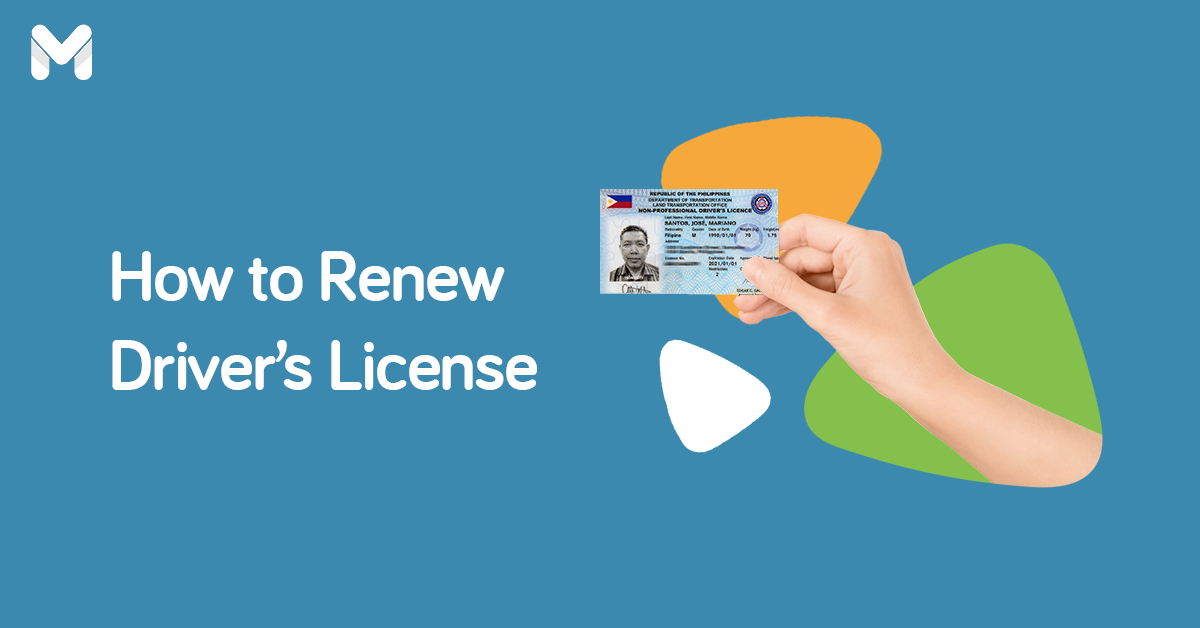Your vote is your voice. But for that voice to be heard, you need to be a registered voter first. You need to know the process of COMELEC registration in the Philippines.
If you don’t know where to start, this comprehensive guide on COMELEC registration for 2025 will help you out. This covers requirements, steps involved, validation of registration records, and determining your precinct number.
Read on to learn more.
What is Voter’s Registration?
Voter's registration is the process in which an individual files an application for a voter record with the Commission on Elections (COMELEC). It’s a requirement for any Filipino who wishes to join in choosing the next public officials in the Philippine elections, as well as those who plan to run for public office.
Who Can Register as a Voter in the Philippines?
-Jan-29-2024-04-30-59-0962-AM.png?width=600&height=400&name=Pics%20for%20blog%20-%20600x400%20(21)-Jan-29-2024-04-30-59-0962-AM.png)
You’re qualified to register as a voter in the Philippines if you meet the following voter's registration requirements:
👤 Eligibility Requirements for Regular Voters
- Filipino citizen who has never registered with the COMELEC
- At least 18 years old on or before the upcoming elections
- Living in the Philippines for at least one year
- For barangay elections: Living in the barangay where they intend to vote for not less than six months prior to election day
👤 Eligibility Requirements for Sangguniang Kabataan Voters
- Filipino citizen who has never registered with the COMELEC
- At least 15 but not older than 30 years old on or before the SK Elections[1]
- Living in the barangay for not less than six months prior to election day
When is the COMELEC Registration for the 2025 Elections?

All COMELEC registration services, including reactivation and transfer of voter's records, are processed during the voter registration period. Registration runs only for a limited period before an election. Be aware of the schedule to avoid missing the deadline.
Voter registration for the 2025 national and local elections will commence on February 12, 2025 and end on September 30, 2025. The schedule of COMELEC registration is from Mondays to Saturdays, 8:00 a.m. to 5:00 p.m. Registration is also open during holidays (except Holy Week from March 28 to March 30, 2025).
Where Can I Register to Become a Voter?
Applicants may visit the Office of the Election Officer (OEO) or satellite registration sites in their respective localities to register. Certain designated areas can also serve as registration venues.
As part of its efforts to increase voter turnout, the COMELEC will roll out the Register Anywhere Program or RAP.[2] The commission targets at least three million voters for the 2025 elections.
Under RAP, you can register to vote at designated venues across the country regardless of your current residence. Case in point: a Laguna resident who happens to be in Manila will be allowed allowed to register in Manila. This makes it easier for people who reside far away from their registered addresses to register.
The commission will set up shop at the following facilities for walk-in COMELEC registration:
- Malls – In 2022, the COMELEC conducted pilot testing at malls in Metro Manila, Bicol Region, and Leyte Province. You can now proceed to the COMELEC registration booth in select malls after shopping or running some errands.
- Select private establishments and church organizations – If you happen to live close to these locations, you won’t need to visit the OEO to register.
- Government offices – If you’re transacting with a government office, you might as well register to vote.
- Universities – If you’re a student, you may be able to register at your campus.
The COMELEC will announce the list of RAP locations and their schedules soon. Take note that the registration period at RAP venues ends on August 31, 2025.
What are COMELEC Registration Requirements?
Before you head to the OEO, satellite office, or RAP location, you need to know what to bring on the day of your registration. Take note of the following COMELEC registration requirements:
📋 Valid ID
A valid government-issued ID is one of the requirements for voter's registration in the Philippines. Make sure your ID bears your signature.
You’ll need to present one of the following:
- National ID/PhilSys ID
- Driver’s license or student permit
- SSS ID/GSIS ID/UMID
- IBP ID
- NBI clearance
- Passport
- Postal ID
- PRC ID
- PWD ID
- Barangay ID/Certification with photo
- Senior Citizen ID
- Company ID or Employee ID
- Student ID or library card signed by the school authority
- Certificate of Confirmation from the National Commission on Indigenous Peoples (NCIP)
- Any other government-issued ID
Notes:
- The COMELEC won’t be accepting company IDs due to abuse in the past.
- Bring more than one valid ID. It’s best to bring many valid IDs even if you only need one. If the ID you present turns out to be unacceptable, you have backups.
Read more: Pag-IBIG Online Registration: How to Become a Member Without the Hassle
📋 Registration Form or Form CEF-1

The COMELEC recommends downloading the application forms from its website, printing them, and filling them out manually at home before your registration.
However, don’t put your signature and thumb marks in advance. The COMELEC requires doing this only in front of the election officer during voter’s registration.
Notes:
- Click the CEF-1 link[3] to download the voter’s registration form. Print it on a long bond paper (8.5″ x 13″). A4 or legal-size paper is not allowed.
- The Supplementary Data Form is for PWDs, senior citizens with disabilities, indigenous people, applicants who can’t read or write, or those who will assist such voters. Download this form only if it’s applicable to you.
COMELEC Registration Process: How to Register as a Voter in the Philippines
-Jan-29-2024-04-37-52-8796-AM.png?width=600&height=400&name=Pics%20for%20blog%20-%20600x400%20(22)-Jan-29-2024-04-37-52-8796-AM.png)
Now that you know the COMELEC registration requirements, it’s time to walk you through the application process:
Step 1: Go to the Registration Venue
As mentioned, you have options here. You can go to the OEO or any participating RAP venue. Make sure you have your requirements with you.
Step 2: Present the Requirements for Voter's Registration
At the registration venue, find the queue for submitting voter's registration requirements. The election officer will check your ID to verify your identity, place of residence, and registration status on the government agency’s database.
Also, submit your accomplished voter’s registration application forms to the designated officer who will check them for completeness of information.
Step 3: Get Your Biometrics Captured
If your application form is good to go, you’ll be asked to proceed to the biometrics capture area.
Line up at the first queue to have your photo taken. Look straight at the webcam until the flash appears. You may ask the operator to show you your picture, so you can check if it’s captured correctly.
Next up is fingerprint capture. On the fingerprint scanner, place your right and left thumbs and index fingers one at a time. The operator will guide you on how to do it properly.
Lastly, go to the queue for the signature capture. Simply sign on the signature pad, similar to how you sign on paper. Check the computer monitor to see if you’ve signed correctly. You may repeat this step if your signature was not captured right the first time.
Step 4: Receive Your Acknowledgment Receipt
When you’re done with your biometrics capture, you’ll be requested to write down your name and sign on a logbook. You’ll then be issued an acknowledgment receipt.
At this point, you're not a registered voter yet. Your application will undergo approval by the Election Registration Board (ERB) during its scheduled quarterly hearing. After the ERB hearing, your information will be recorded in the book of voters of your district, city, or municipality. Only then can you be considered a registered voter.
Read more: PhilHealth Online Registration Guide: How to Register as a New Member

COMELEC Registration: FAQs
Still have questions on COMELEC registration? Let the answers below clear things up:
1. Do RAP sites only accept new registrations?
Thankfully, RAP venues not only accept new registrations but also the following cases:
- Transfer of registration – Those who have moved to a new location can conveniently update their address at a RAP site.
- Reactivation – If your voting registration has been deactivated, you can reactivate it at a designated RAP venue.
- Correction of entries – If there’s a mistake in your voter information, you can correct it at the RAP site.
- Change of status – If you’ve changed your name or gotten married, the RAP site allows you to update your status.
- Transfer to local from overseas – Flying back from abroad? You can transfer your registration via this COMELEC program.
2. Can I apply for COMELEC registration online?
COMELEC’s dedicated web app, called iRehistro, accepts online voter’s registration in the Philippines. However, the system is undergoing maintenance at the moment.[4]
3. How often should I register as a voter?
Voter’s registration application is permanent and done only once. If you’re already a registered voter, you don’t have to register again each time there’s an upcoming election.
However, you need to apply for reactivation of your COMELEC registration record if you failed to vote in two consecutive regular elections (which puts you in a deactivated voter’s registration application status). In the COMELEC registration form, select Application for Reactivation of Registration Record.
4. Can I apply for COMELEC reactivation online?
Yes. Individuals may file the following types of applications online until September 7, 2025 via iRehistro (once it goes back online):
- Reactivation
- Reactivation with record updates for senior citizens and persons with disabilities (PWDs)
- Reactivation with transfer of registration within the same municipality/city/district, AND/OR with entry correction
5. How do I transfer my COMELEC registration?
When you move to a different location, you should apply for the transfer of your registration record at the local COMELEC office in your new place of residence. In doing so, you won’t have to travel far to get to your former city or town every election period.
On the voter registration form, just select Application for Transfer of Registration Record and provide your new address.
The requirements for the transfer of voter's registration records are the same as those for new voter's registration. Just be sure that the valid ID you present indicates your new address. Otherwise, a COMELEC representative will ask you to provide other supporting documents that prove your current residence.
6. How do I update my COMELEC registration?
To request a correction or an update of your voter’s information, you have to submit certain documents as proof.
Here are the COMELEC requirements for registration if you need to update your information:
- For correction of name, date, and place of birth – Original and photocopy of birth certificate
- For changing civil status and change of name due to marriage/annulment – Any original or certified true copy of the following:
- Marriage contract
- Certification by the solemnizing officer
- Court order with a certificate of finality (in case of annulment)
- Order by the Civil Registrar or Consul General
On the voter’s registration form, select Application for Change of Name/Correction of Entries in the Voter’s Registration Record. The application procedure for updating voter’s records is the same as that of new registration.
7. How do I find my voting precinct?
You can find your voting precinct by using COMELEC’s online precinct finder. Here’s how:
- Head to the online precinct finder page at precinctfinder.comelec.gov.ph.
- Once there, enter the required information, such as your full name as it appears on your voter registration record, date of birth, and date of registration.
- Click Search. You’ll then get your assigned polling place and precinct number.
Alternatively, you can find your voting precinct at the election venue. Election staff and accredited volunteers will direct you to your voting precinct after you provide them with the necessary personal information.
The same process applies if you want to know how to check your voter registration status in the Philippines online.
8. How do I check my registration status if the COMELEC Precinct Finder is not working?
Can’t verify your voter’s registration status online? You'll have to do your voter status verification in person or via email.
Contact or visit your local COMELEC office. Present a valid ID and tell the COMELEC officer that you want to verify your voter status.
9. How do I get a voter's ID in the Philippines this 2025?
Don’t expect the voter’s ID to be issued when you're done with your COMELEC registration procedure, as had been the practice in the past. The COMELEC has stopped printing and issuing this ID since 2017 to give way to the national ID system.[5]
Instead, you can apply for a voter's certification that certifies your being a registered voter in the Philippines. This document is accepted in lieu of the voter's ID for transactions that require a valid ID, such as passport application.
10. How do I get a voter's certification in the Philippines?
You're qualified to apply for a voter's certification only when your COMELEC registration application has been approved by the Election Registration Board. If you're not a registered voter yet or you've just filed your registration to the COMELEC, you'll have to wait until you're registered before you secure a voter's certification.
You may request a voter's certification at the local COMELEC office where you're registered or at the COMELEC Main Office in Intramuros, Manila (FEMII Building, Extension Cabildo St. corner A. Soriano Ave.).
Simply present a valid ID, submit a photocopy of it, and pay the ₱75 fee. The voter's certification fee is free of charge if you belong to any of the following groups:
- Senior citizens
- Solo parents
- Persons with disability (PWDs)
- Members of indigenous peoples (IPs) and Indigenous Cultural Communities (ICCs)
Note that personal appearance at the COMELEC office is a requirement for voter's certification applications. If you can't personally apply for a voter's certification, you may have your authorized representative do it on your behalf.
The voter's certification requirements for authorized representatives are an authorization letter and original and photocopy of the valid ID of both the voter and representative.
11. Do I need to present a voter's ID or voter's certification to vote?
There's no need for a voter's ID, voter's certification, or any valid ID to vote, according to COMELEC. But it's still advisable to bring at least one government-issued ID in case the election officer needs to verify your identity.
12. What are the official COMELEC channels?
Get updates from official and legitimate COMELEC channels, such as the following:
- Comelec website – https://comelec.gov.ph/
- Comelec Facebook page – https://www.facebook.com/comelecwebsiteadmin/
Furthermore, COMELEC encourages people to follow #RegisterAnywherePH for updates and discussions.
Read more: How to Register as an SSS Member Online: Opening an Account via My.SSS
Final Thoughts
The registration period for the 2025 elections is just around the corner. You have enough time to go to COMELEC registration sites and various alternative locations, thanks to the rollout of RAP. Avoid applying at the last minute as registration venues tend to get jam-packed and stressful.

Sources:
- [1] Sangguniang Kabataan Page
- [2] You can now register anywhere: Your guide to Comelec’s nationwide voter registration (Philippine Information Agency, 2024)
- [3] COMELEC Application Form
- [4] iRehistro Page
- [5] PSA: Delivery of Physical National IDs to be Completed in September 2024 (GMA News, 2023)









